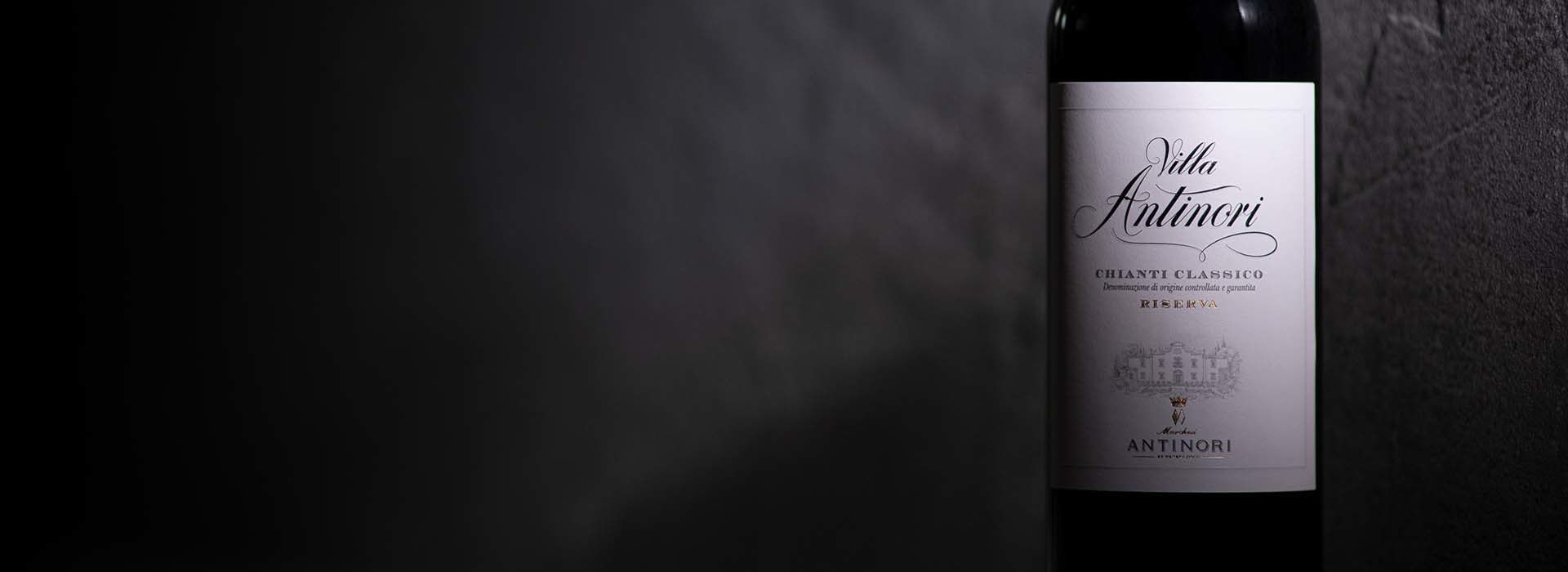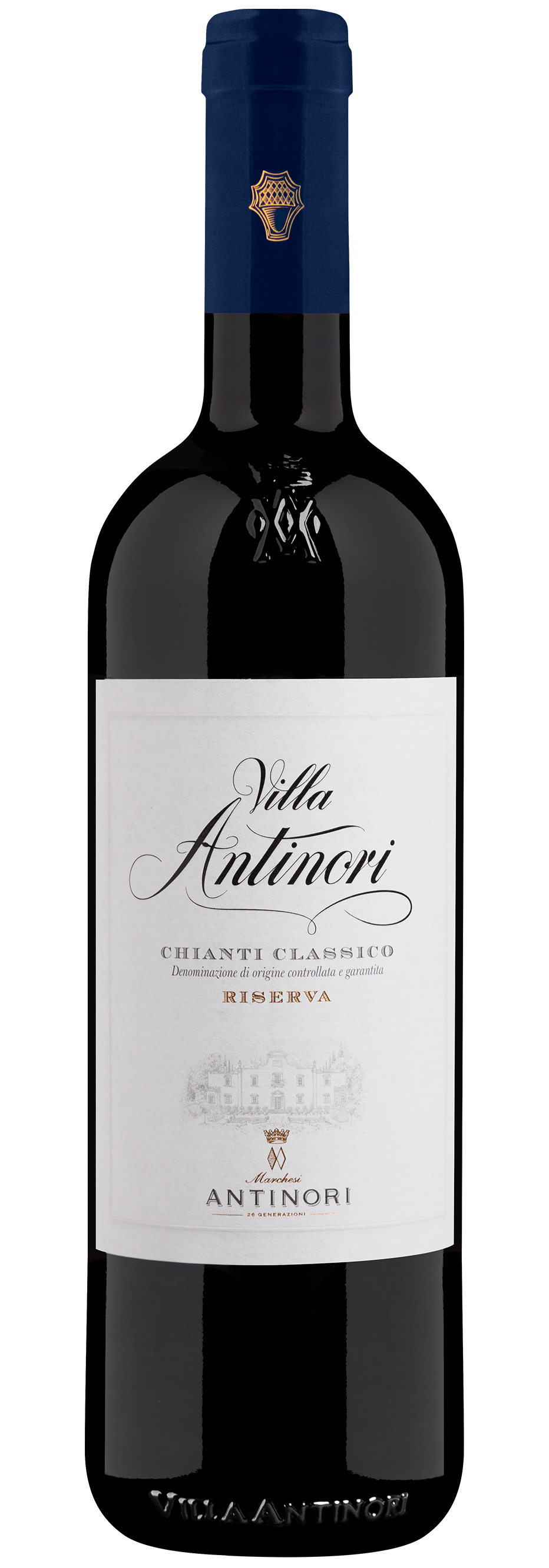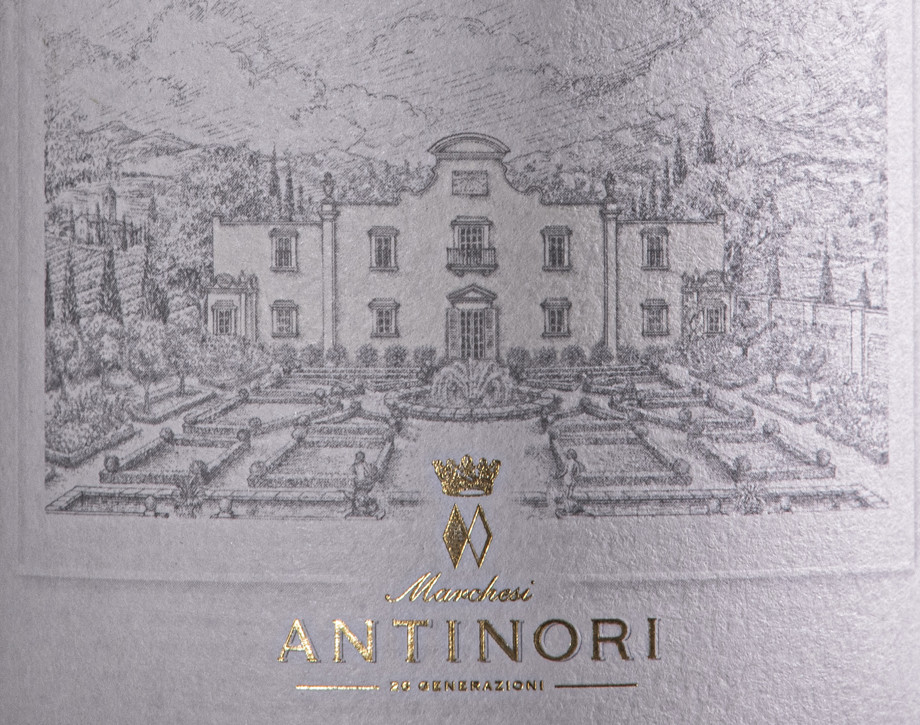Villa Antinori Chianti Classico Riserva

Climate
After a generally dry autumn and winter with little rainfall, the spring of 2016 in Chianti Classico followed with fine weather conditions, favoring a bud break which was approximately ten days earlier than normal seasonal averages. Precipitation and cooler than usual temperatures marled the month of May and the first half of June, days which, nonetheless, did not influence critical phases of flowering and bud set. A warm and dry summer enabled the achievement of a high-level balance of grapes and vegetation and guaranteed a perfect ripening of the crop. The harvest period was a regular one with occasional moments of rain and long periods of sun and breezes, assisting an ideal period of ripening of all of the varieties which were planted. The picking was carried out during the second half of the month of September and terminated during the month of October.
Vinification
The grapes, after destemming and after being given a delicate pressing, went into stainless steel fermenting tanks where it went through a long fermentation process at a controlled temperature maintained at a level no higher than 86 °Fahrenheit (30 °Centigrade). The maceration on the grape skins lasted approximately fifteen days during which time soft and controlled extraction techniques were utilized to attain aroma, structure, and sweet tannins. At the end of the malolactic fermentation, carried out in stainless steel tanks in the case of the Sangiovese and barriques of second and third passage with the other grape varieties, the various lots of wine were blended and continued to age in oak, principally in casks and, in lesser measure in oak barrels, up until the spring of 2019, the Villa Antinori was bottled in July of 2019.
Historical Data
Villa Antinori is, first and foremost, an idea, a way of conceiving the production of wine: on the one hand, experimentation and evolution, on the other hand, continuity in tradition. Sangiovese and other complementary grape varieties render their homage to an historic label and a wine with a long tradition,: this name, in fact, is almost one hundred years old, as the wine was produced for the first time in the 1928 vintage. With the inauguration of the Antinori Chianti Classico cellars, the family wished to reinterpret a Tuscan classic with a Riserva offering which is both delicate and, at the same time, elegant and decisive in flavor.
Tasting Notes
Villa Antinori Chianti Classico Riserva 2016 presents an intense ruby red as a color. The nose shows notes of ripe red fruit, wild cherries and sensations of dried wild flowers along with spicy aromas of cinnamon and a pleasurable balsamic finish. The palate is balanced, savory, and vibrant with a long and persistent aftertaste which brings back the wine’s ample spicy aromas and flavors.
Awards
Wine Advocate 92/100 USA James Suckling 92/100 USA

The Wine
Villa Antinori Chianti Classico Riserva is a blend of Sangiovese together with other complementary varieties produced as a tribute to Antinori’s historic label that has accompanied the family’s winemaking traditions over the years. The inauguration of the new winery Antinori nel Chianti Classico inspired the family to reinterpret this Tuscan classic into a premium quality wine with unmistakable style, the resulting Riserva is delicate, decisive and elegant.

Climate
After a generally dry autumn and winter with little rainfall, the spring of 2016 in Chianti Classico followed with fine weather conditions, favoring a bud break which was approximately ten days earlier than normal seasonal averages. Precipitation and cooler than usual temperatures marled the month of May and the first half of June, days which, nonetheless, did not influence critical phases of flowering and bud set. A warm and dry summer enabled the achievement of a high-level balance of grapes and vegetation and guaranteed a perfect ripening of the crop. The harvest period was a regular one with occasional moments of rain and long periods of sun and breezes, assisting an ideal period of ripening of all of the varieties which were planted. The picking was carried out during the second half of the month of September and terminated during the month of October.
Vinification
The grapes, after destemming and after being given a delicate pressing, went into stainless steel fermenting tanks where it went through a long fermentation process at a controlled temperature maintained at a level no higher than 86 °Fahrenheit (30 °Centigrade). The maceration on the grape skins lasted approximately fifteen days during which time soft and controlled extraction techniques were utilized to attain aroma, structure, and sweet tannins. At the end of the malolactic fermentation, carried out in stainless steel tanks in the case of the Sangiovese and barriques of second and third passage with the other grape varieties, the various lots of wine were blended and continued to age in oak, principally in casks and, in lesser measure in oak barrels, up until the spring of 2019, the Villa Antinori was bottled in July of 2019.
Historical Data
Villa Antinori is, first and foremost, an idea, a way of conceiving the production of wine: on the one hand, experimentation and evolution, on the other hand, continuity in tradition. Sangiovese and other complementary grape varieties render their homage to an historic label and a wine with a long tradition,: this name, in fact, is almost one hundred years old, as the wine was produced for the first time in the 1928 vintage. With the inauguration of the Antinori Chianti Classico cellars, the family wished to reinterpret a Tuscan classic with a Riserva offering which is both delicate and, at the same time, elegant and decisive in flavor.
Tasting Notes
Villa Antinori Chianti Classico Riserva 2016 presents an intense ruby red as a color. The nose shows notes of ripe red fruit, wild cherries and sensations of dried wild flowers along with spicy aromas of cinnamon and a pleasurable balsamic finish. The palate is balanced, savory, and vibrant with a long and persistent aftertaste which brings back the wine’s ample spicy aromas and flavors.
Awards
Wine Advocate 92/100 USA James Suckling 92/100 USA

Villa Antinori
Villa Antinori is an important corner stone as its name is associated with over 100 years of history. At the same time it represents ongoing progress. The one essential principle is continuous research for increasingly higher quality standards. This idea produced two different wines that share a common passion for quality: Villa Antinori Rosso and Villa Antinori Bianco. Villa Antinori was originally produced in 1928 by Marchese Niccolò Antinori as a Chianti Classico that could age and that would improve over time. Soon after, Villa Antinori was found in the most prestigious cellars in embassies, royal houses, important hotels and restaurants. In 1931, Villa Antinori Bianco was made from traditional Trebbiano grapes. In the 1980’s a small percentage of Chardonnay was added in order to give the wine better structure.


















